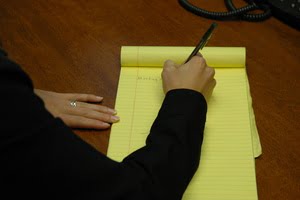Anyone can be a poet.
Democracy is a wonderful thing, but it comes with responsibilities. So too with poetry, despite the modern trailblazers like Walt Whitman andEmily Dickinson, who made their art look simple, more natural and spontaneous, than the formalistic work of their predecessors, especially a Chaucer, a Shakespeare’s and a Keat. The term “free verse” has a lot to do with the misconception that allows everyone to pass off their every thought or inspiration as poetry. The impression I get is that if one cannot put one’s thoughts down in the form of a short story or novel, one will try to show off one’s writing as poetry.
First, free verse is not “poetry without rules.” Free verse has to follow some basic rules of poetry, rules that help us create music and rhythm. So long “free verse” achieves rhythm, it will be accepted as poetry. No music, or no cadence, or no meter – may suggest we are talking of writing other than poetry. The term “verse” must be the key to our understanding of writing it. After all, the term “verse” informs everyone of the meanings, “poetry; lines of words usually with a regularly repeated accent” (REFERENCE: The World Book Dictionary, ed. Clarence L. Barnhart).
Free verse” does not mean poetry that does not rhyme. The absence of rhyme is definitely not what distinguishes Free Verse. Please forget, for purposes of this discussion, the issue of rhyme in poetry, whether internal rhyme within singles lines, or the more familiar end-rhymes. The category is really meant to indicate late modern poetry that creates rhythm and music without meticulous regard to precisely how English is “spoken out, ” or spoken/read aloud. Any basic study of language learning suggests there are stressed and unstressed syllable patterns in languages, espeiclaly English. Otherwise, we would be speaking in flat tones, monotones, or perhaps similar to some Far Eastern languages. When we study how syllables and their “accents” produce all manner of sound and sense effects, we begin to talk of syllable-pairings in “feet”, such as the “iambic foot” which many readers encounter with William Shakespeare.
With regards to poetry, therefore, “free verse” refers to the absence of detailed scansion, that is, less than meticulous attention to diction that allows a specific series of accents or “feet” per line. These accents are connected with accepted pronounciation, so that a particular music or rhythm will be achieved by the detail-oriented poet.
Did you know that tetrameter or four beats (“feet”) per line, as in folk poetry and song, is perhaps easier to imitate or sing than Shakespeare’s work? Personally, the challenge hasnot been those multi-syllabic words where the stress or accent is clear, but the monosyllables that may be either stressed or unaccented. Thus, we know “comPARE” has the accent on the second syllable, not on “COM.” But I have had greater difficulty in telling if “I”, “Me”, “So”, “Why”, “Much” have accents or not. (However “BASEBALL” has both stressed or accented syllables, which is really comprised of two independent words that created the compound, BASEBALL.) Now, Emily Dickinson achieved her effect with her rather serious themes and poems because she “upsets” the tetrameter commonly used in upbeat folk music, to write and speak about death, loss and sacrifices in her poems. Geoffrey Chaucer imitated serious European poets and employed more than the folk poets’ four beats (or four feet) per line, and Shakespeare followed suit.
Most people are familiar with Shakespeare having used the “Iambic Pentameter.” This meter or combination of stressed and unstressed syllables in each line (also called accented and unaccented syllables) resembles “official” or formal English. Now the word “accent” is related to our common knowledge of its meaning, but only to the extent a foreign accent tend to indicate that newcomers to our parts emphasize or ACCENT different syllables than native speakers do (class differences apart). Whether one says “nu-TRIT-ion” or “NU-trition” is a function of where one grew up, with whom one attended school, and whether or not one is focusing on “proper” speech. In iambic pentameter, Shakespeare begins each line with an “unstressed” syllable followed by “stressed” syllable, and so on to a total of FIVE pairs in each line. Iambic Pentameter in Shakespearean sonnets have lines with ten syllables (total) in the specific combination of unstressed (symbolized by – ) and stressed (symbolized by / ) syllables, giving us the ten, thus: – / – / – / – / – / (Think of the sonnet that begins, “Let me not to the marriage of true love” or “Shall I compare thee to a summer’s day?” or even Hamlet’s speech beginning, “To BE or NOT to BE”).
Shakespeare and other well-known poets are respected more thanyou and I because most of what they wrote had a signature or specific meter. If our work lacks meter or rhythm, we fail to create poetry. Even free verse needs meter, or a careful combination of stressed and unstressed syllables in the chosen diction. There are three to six combinations of syllables (apart from “iambs” versus “troche,” where troche is formed by combining stressed and unstressed syllables in that order ” / – ” ) combined in up to six (hexameter) feet. Shakespeare remained happy with five feet (or five pairs of unstressed and stressed syllables per line). But remember even Shakespeare changed from pentameter to fewer than five pairs of “feet” in order to imitate the speech of lesser beings (as with PUCK in A MIDSUMMER NIGHT’S DREAM) and contrast these with lower class speech, whereas the upper classes (royalty) almost always speak in iambic pentameter.
I have attempted a poem, in free verse, although the form is a formal one that you will recognize. One cannot credit me with having been faithful to iambic pentameter, but it still resembles a poem because of my having followed other conventions (such as rhyme, rhythm, alliteration and metaphor, to name the most common ones, as employed below):
FORM, FAITH and FREE VERSE
Where have all the European sonnets gone?
What replaced pentameter discipline?
What of the nights, years spent with Dickinson;
Lyrical gone, bard gone, the Italian:
Octave; sestets couplet after quatrain
Have given way to beckoning fiction
My heart ahead of body of poems, brain
No more diving within haiku, and Zen,
No reverie among villanelles, odes
There was a thread of hope for elegy
This novel is a-writing life in codes
I keep from becoming my Emily:
She, no nun of Amherst, broke convention;
I respect the Law through Faith and fiction.
Deo, 6-5-2008
So, in conclusion, please remember that “No meter means no poetry” and that “free verse” is not the same as “anything goes.”



